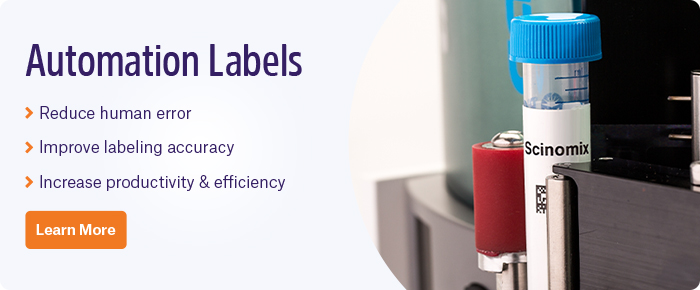
Repetitive stress injury (RSI) is a serious condition that’s frequently associated with lab work. The daily routine of pipetting and other repetitive movements can lead to tissues, like muscles, tendons, and ligaments, wearing down. The resulting picture isn’t bright: chronic pain, aches, cramping, swelling, tingling, and numbness are just some of the symptoms of RSI. Some even suffer from full-blown RSI-associate syndromes, like carpel tunnel syndrome, tendonitis, or tenosynovitis (inflammation of the fluid-filled sheath around the tendon).1
What causes RSIs?
Repetitive tasks, like pipetting, can put a constant strain on your hand and wrist, the effects of which can last for days or week (or sometimes months) after you’re done, especially when you need to jam the pipette into the tip box to get each tip and you’ve got hundreds of samples to prepare. Standing around all day also has its downside, as you’re putting an enormous strain on your muscles and back, to keep you upright for long periods. This can be exacerbated if your posture is off, even if you’re sitting, and psychological stress can often intensify the strain you put on yourself.
Things you can do to minimize the damage
Here are some ways you can avoid RSIs while working in the lab:
Automate – Why prepare your samples yourself and risk RSI when a machine can do it for you? Automation is becoming commonplace in the lab, with many basic tasks, including labeling, liquid dispensing, and pipetting, becoming fully automated. Certain kinds of labs, like histology labs, have embrace automation to the point where every single step of the histochemical process, from fixing and embedding to sectioning and staining, can now be performed by a machine.
Choose the right pipette – Many different pipettes exist that don’t require the same physical exertion as the standard models. To start, the design of the pipette should be ergonomic enough to make you feel comfortable when pipetting. Some pipette models are “light touch” and don’t require much pressure to use, while others are purely electronic. Multichannel and repeat dispenser pipettes can also be valuable, as they reduce your overall workload; however, these pipettes are a bit harder to maintain and aren’t generally as accurate with small volumes as single-channel pipettes. You can also purchase “light touch” tips, which are easier to apply to the end of the pipette because of their flexible mountain area.
PikaTAGTM – If you label your tubes with dot labels, you might experience the strain it can put on your hand and fingers, constantly lifting labels from their liners and affixing them to the top of tubes. One way to mitigate the risk of RSI when labeling is by using the PikaTAG, a label application accessory. Its ergonomic pen-shaped design lets you accurately pick up labels from their liner and attach them to the tops of tubes and vials without removing your gloves.
Adjust your posture and working position – Posture is important to avoid pulling your body in unnatural ways, which can put a strain on muscles and connective tissues. Maintaining proper posture can be accomplished by:
- Keeping a clean bench and organizing your consumables prior to working. This will prevent you from constantly stretching to reach tubes and tip boxes.
- Make sure your tip disposal jar is as low as possible. If the jar is too high, reaching up then pressing down on the pipette will put unwanted stress on your wrist.
- Find an ergonomic seat and keep your back in an upright position. You should probably do this at home too.
- Use padding, if needed, that you can rest your arms on.
- Keep your wrist in a neutral or straight position when pipetting, without twisting or rotating it. Avoid twisting your arms and wrists for all procedures, and set your elbows close to your sides, which maintains your shoulders in a sturdy, neutral position.
- Relax your muscles as much as possible; tensing up while you’re working will make it more likely you’ll suffer from RSI.
- If it helps, you can always hang your protocol in front of you, so you don’t need to constantly bend your neck and look down to find the next step.
Take breaks – Organizing your workload is key when trying to avoid RSI. When planning your workflow, make sure to include breaks as well. Stopping for a few minutes after a moderate period of repetitive motion is necessary, as it allows your muscles and joints to recuperate intermittently, lessening the burden on them.
The toll of all that hard work
RSI is more common in laboratory personnel than other workers. A study in Sweden found that the prevalence of RSI was double that of state employees who did not work in labs and that pipetting for more than 300 hours per year was a risk factor for RSI.2 A similar study in the United Kingdom confirmed these results, where 80 pipette users had an elevated risk of RSI compared with 85 people who did not use pipettes for their work, with almost 90% of workers who pipetted for 60 continuous minutes or more complaining of hand pain.3 In the United States, RSIs are not even specifically addressed by the US Occupational Safety and Health Administration (OSHA); if a citation is issued for an RSI, it is categorized as a general duty clause that states labs must be kept free of safety hazards.4
RSIs represent a constant, silent danger to working in a lab. Once an RSI appears, it’s hard to treat since the part of the body that’s affected will need to keep performing that same activity again and again, making the injury worse over time. Ultimately, you lose productivity, and for some, their entire livelihood can be curtailed by a serious RSI. That’s why it’s worth investing in strategies to limit exposure to RSIs, making your lab a safer and more comfortable place to work in.
LabTAG by GA International is a leading manufacturer of high-performance specialty labels and a supplier of identification solutions used in research and medical labs as well as healthcare institutions.
References:
- National Institute of Environmental Health Sciences. NIEHS Health and Safety Guide to Laboratory Ergonomics. Research Triangle Park, NC; 2001.
- Björksten MG, Almby B, Jansson ES. Hand and shoulder ailments among laboratory technicians using modern plunger-operated pipettes. Appl Ergon. 1994;25(2):88-94.
- David G, Buckle P. A questionnaire survey of the ergonomic problems associated with pipettes and their usage with specific reference to work related upper limb disorders. Appl Ergon. 1997;28(4):257-262.
- Fogarty M. Arm and Wrist Injuries Teach Scientists to Accept Limits. The Scientist. March 2004.



